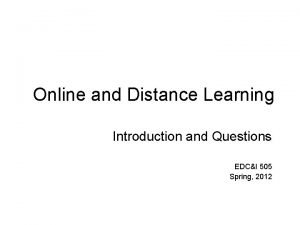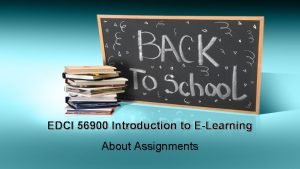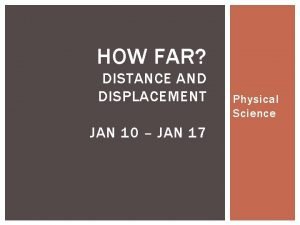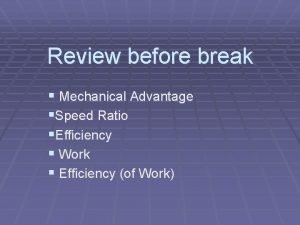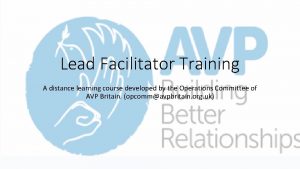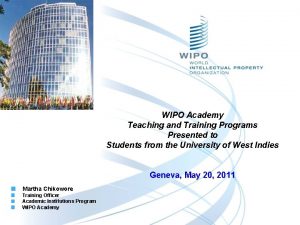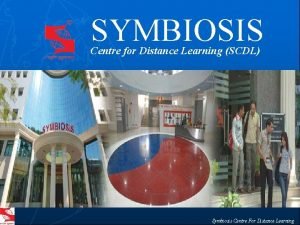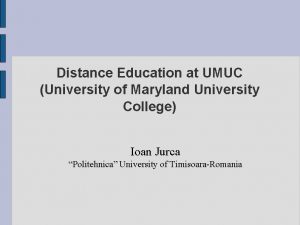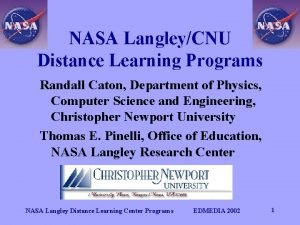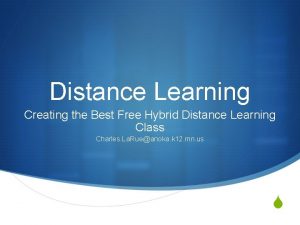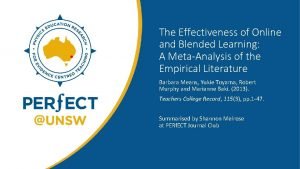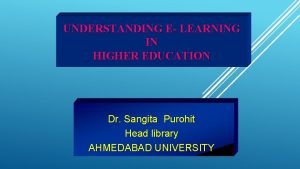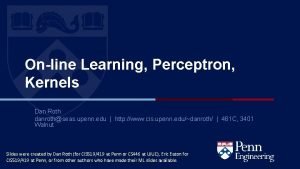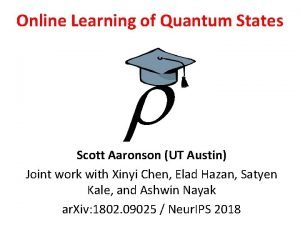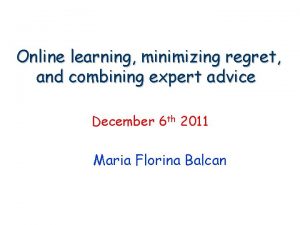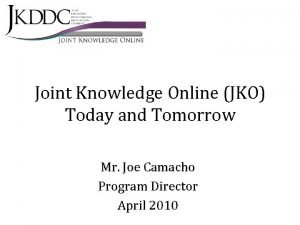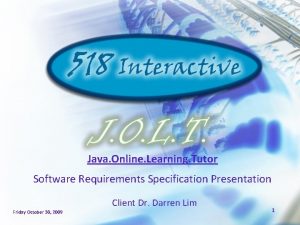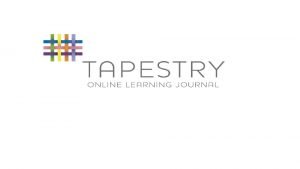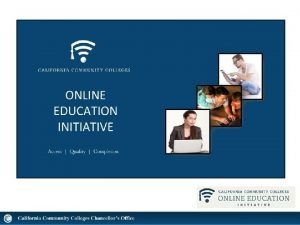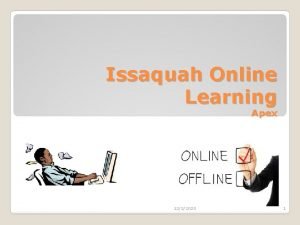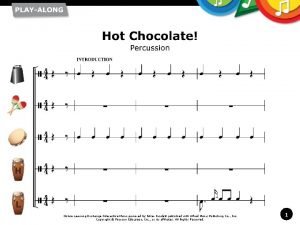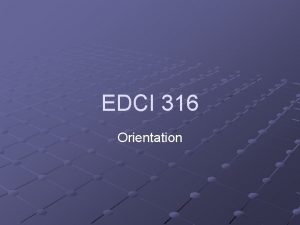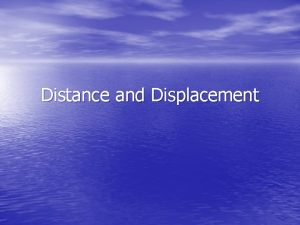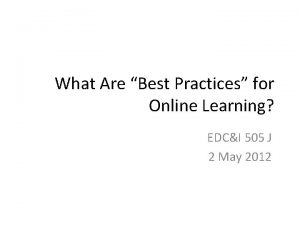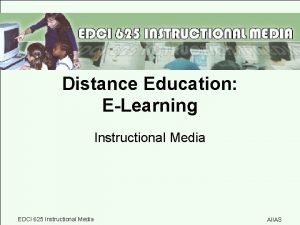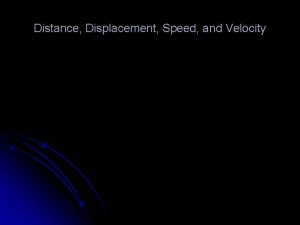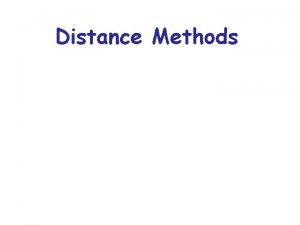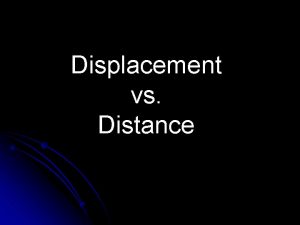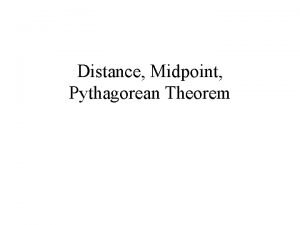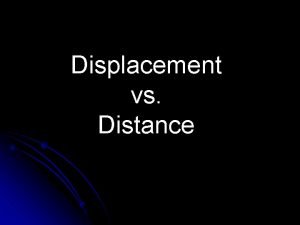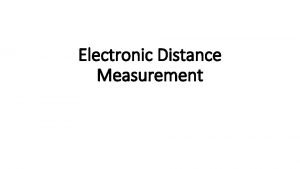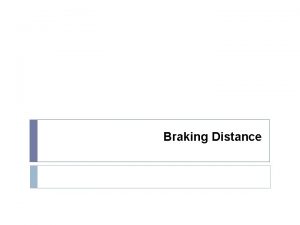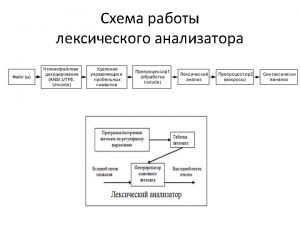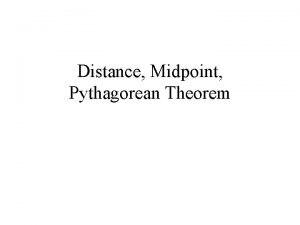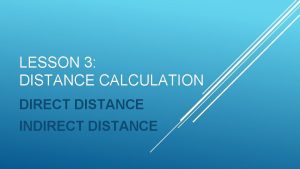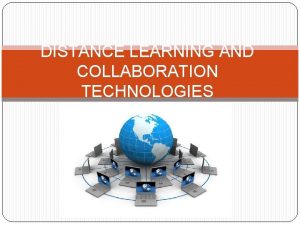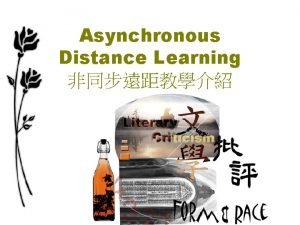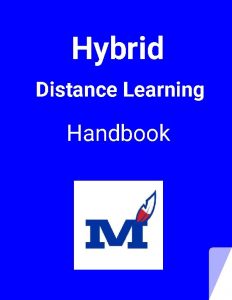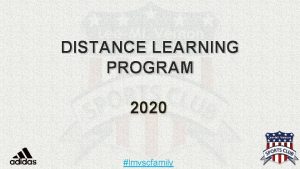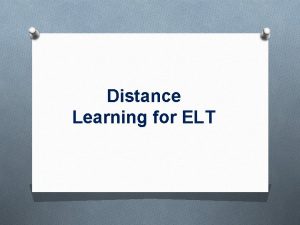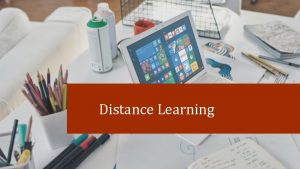Online and Distance Learning Introduction and Questions EDCI
























- Slides: 24

Online and Distance Learning Introduction and Questions EDC&I 505 Spring, 2012

Agenda for This Evening • A few preliminary questions • Introductions – You – Me – The Course • An introductory presentation – History, recent background, directions now

Initial Questions • Your experience in taking OL/DL courses: – Taken one/some? (Where, when, subject? ) – Did you learn? – Well designed? (And, how do you judge? ) – Content/interaction: Text or more dynamic? – Do it again? – Enroll in a program entirely online?

The Beginnings • Correspondence schools – late 19 th century • Post office worked faster then… • Kind of mania around these; many trade schools opened correspondence courses

Radio Education (1920 -50) • Used in rural US for extension programs • Used in other countries with sparse populations (Australia, right) • Still used in some developing regions

Televised Education (1950 -80) • Early high enthusiasm; many universities started programs • Difficulty sustaining student motivation and interest • Success in UK with Open University (ca. 1970) • Limited bandwidth

International Distance Ed (1960 - ) • Wide use in many developing countries (India, China, USSR, Central & South America) • Big needs: large populations with minimal ed service • Cost, distance, transportation considerations were primary

The Open University (1969 - ) • First big, coordinated instructional design effort – Texts, video/radio/etc. all prepared to work together – (But: video = only about 10% of content) • Team model for development • Production values were low in early period • Particular to social situation in UK, post WW II • Now increasingly online • Good research programme

Online Learning (1980 - ) • Quick perception that this could be done cheaply and easily (in a technical sense, anyway!) • Early work in text-only settings (videotex & teletext in 1980 s UK); WELL/NJIT in US (mid 80 s) • Web-based programs from about 1995

Today • Efforts to move from text-largely formats to interactive, “Web 2. 0” approaches • Increasing spread to K 12, corporate, military settings • Now wide acceptance and use (50% of UW undergrads!) • Major shift in focus of work over past 10 years

O&DL: Then and Now • Then (pre-2000) – Big, clunky systems – Operation = difficult – Student contact = sporadic and formal – Design = static, mostly linear – Research: “Is it as good as…? ” – Student motivation, drop-outs = key • Now (post-2000) – Nearly omnipresent – Relative ease of use – Contact can be frequent, informal – Design = becoming more varied – Research: “How can we capitalize on…? ” – Motivation less an issue

What We’ve Learned • Online/distance ed works, in the sense that people can and will learn under all sorts of conditions • Technical aspects are often perceived as most complicated BUT… • Organizational (support) and instructional (design) issues are likely more significant

Finally, “proof”… • That “It’s the design, stupid!” – Well-designed OL courses really do lead to “asgood-as” (and sometimes “more/better than”) learning (of some things, under some conditions) – “Managing the contingencies” of instruction = key – Learners = now more accustomed to working OL – There are likely still some self-selection effects – (See: two Bernard studies; Means)

New Tools • New types of interaction emerging – Group text/document management – Commenting, annotation, feedback – Video annotation and tagging systems – Learning community approach MOODLE 2003 -2011

New Audiences • Spread of online K-12 – Home schooling, chronically ill, adjudicated – 32 state OL schools • State-required online HS courses – Idaho = latest (11/11; 2 – 1 synch, 1 asynch) – Others: Michigan, Alabama, Florida • Move to require practice in OL teaching as part of teacher preparation ( 17 states now)

Khan Academy: The New Model for ET in Ed? • Simple production • Big focus on data collection, comparison, display • Reports and research • Gates Fndn support

Open Badges and the Future of Higher Ed • Open badges as measures of achievement – "What employers need isn't really a degree. They want some sort of certificate that establishes objectively that the applicant meets a certain standard of proficiency in the field. They want a guarantee of competence. "

Examples Much in the News • MIT’s Open Courseware Project • 11/11: 2080 courses available • Materials vary – many have topics and reading lists; a few have full video lectures • MIT’s You. Tube channel

UDACITY • Spin-off from Stanford University Comp Sci Dept (copyright fears? ) • 160, 000 in earlier course; 90, 000 in two current classes (3/2012) • Still no interaction w. prof. , but interesting “crowd-sourced question” model

Current Questions: Conceptual & Policy • In context of budget constraints, what are true costs of creating / running / maintaining online programs? • For K-12 schools: – Who controls, monitors, accredits? – Who profits? (“Follow the money…”) – Does OL HS experience really prepare students for “ 21 st c. workplaces”? • For HE: – Implications of Massive Open Online Courses (MOOCs) for traditional university model? – Will employers flock to the “open badge” model?

Current Questions: Design • How do we design for effective learningoriented interaction in a “Web 2. 0” space? • Is there a distinct “mix” of online and faceto-face activities for various subjects? • What detailed design specifics (forms of interaction, use of virtual artifacts, etc. ) are most important? • Does face-to-face interaction retain critical aspects that can’t be duplicated?

Current Questions: The Instructor’s Role • What’s the instructor’s role? What support do instructors need? • In higher ed: – How to “count” OL offerings (in cf. to traditional courses) in faculty load? – Balance between OL & F 2 F teaching? – O/DL responsibilities in union contracts? – Faculty satisfaction with OL teaching as “regular” expectation?

An Ideal Model Setting: Professional development and learning among educators – “Close to real” feeling interaction • Audio/video; breakouts; notifications; chat – Easy online use of documents and materials • Collaborative inspection, sharing, mark-up, modification, storage, retrieval – Real-time updating of records/traces • And selective access to/display of same

To Really Do This, We’d Need to Know • A lot more about how people actually learn and interact professionally to foster their own learning (e. g. , “PLCs, ” “Cso. P” etc. ) – Network analysis studies, etc. • A lot more specifically about how educators do this (and if they do) • A lot more about how to make those processes effective – (In terms of how pupils actually learn better as a result of this increased professional interaction) • THEN…We’d need to know how to facilitate those kinds of learning online
 Edci formula
Edci formula Content writing assignment edci 2900
Content writing assignment edci 2900 What is the difference between distance and displacement
What is the difference between distance and displacement Cuadro comparativo e-learning y b-learning
Cuadro comparativo e-learning y b-learning The ratio of input distance to output distance
The ratio of input distance to output distance Facilitator course distance learning
Facilitator course distance learning Wipo distance learning
Wipo distance learning Scdl service request form
Scdl service request form Umuc education
Umuc education Nasa distance learning
Nasa distance learning Mnabe distance learning
Mnabe distance learning The effectiveness of online and blended learning
The effectiveness of online and blended learning Gcse speed distance time questions
Gcse speed distance time questions Distance between two points graph
Distance between two points graph Calculating speed worksheet
Calculating speed worksheet Conclusion of online education
Conclusion of online education Cis419
Cis419 Ashwin nayak
Ashwin nayak Online learning regret
Online learning regret Joint knowledge online jko learning management system
Joint knowledge online jko learning management system Activity diagram for online learning system
Activity diagram for online learning system Tapestry online learning journal
Tapestry online learning journal Online learning readiness
Online learning readiness Alhs apex
Alhs apex Hlonline training
Hlonline training
